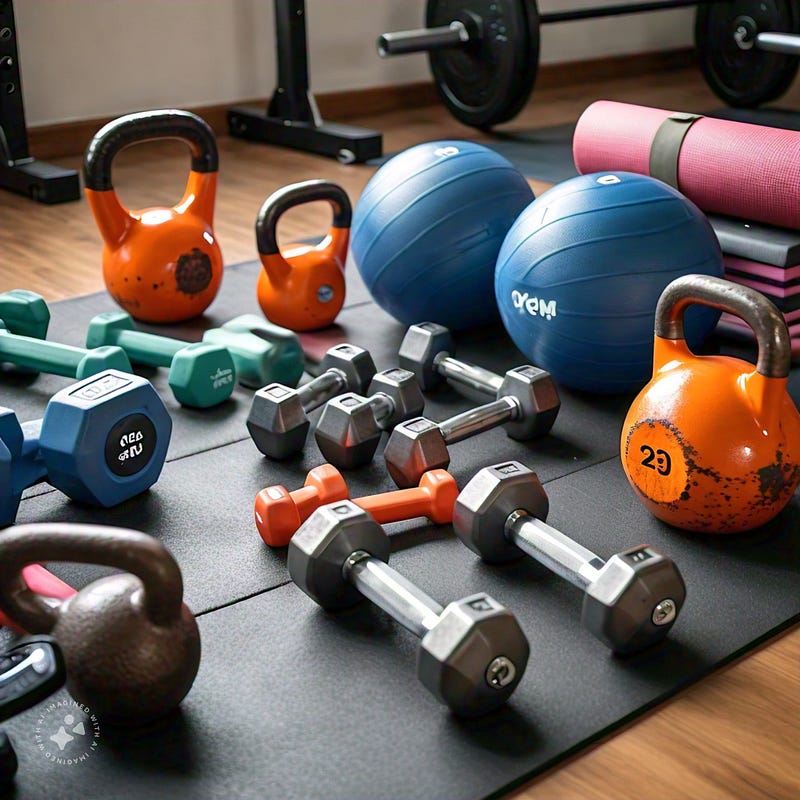HIIT vs. LISS: Which Cardio is Right for You?🏃♂️🔥

When it comes to cardio workouts, two popular methods stand out: High-Intensity Interval Training (HIIT) and Low-Intensity Steady State (LISS). Both have their merits, but they cater to different fitness goals and preferences. Let’s dive into the nuances of each, comparing their benefits, drawbacks, and suitability for various fitness levels and objectives.
Understanding HIIT
High-Intensity Interval Training (HIIT) is a form of cardiovascular exercise that alternates between short bursts of intense activity and periods of rest or low-intensity exercise. A typical HIIT session might involve 20 seconds of all-out sprinting followed by 40 seconds of walking or slow jogging, repeated for 20–30 minutes.
Benefits of HIIT
- Time Efficiency: HIIT workouts are perfect for those with a tight schedule. You can achieve significant results in as little as 20–30 minutes.
- Increased Metabolic Rate: HIIT can boost your metabolism for hours after your workout, a phenomenon known as excess post-exercise oxygen consumption (EPOC).
- Improved Cardiovascular Health: Studies show that HIIT can improve cardiovascular health more efficiently than traditional, longer-duration cardio.
- Muscle Preservation: HIIT helps maintain muscle mass while burning fat, which is ideal for those looking to retain or build muscle.
Drawbacks of HIIT
- Intensity: HIIT is not for everyone. The high intensity can be challenging for beginners or those with certain health conditions.
- Injury Risk: The intense nature of HIIT can increase the risk of injury, particularly if proper form is not maintained.
- Recovery Needs: Due to its demanding nature, HIIT requires longer recovery periods, which might not be suitable for daily workouts.
Understanding LISS
Low-Intensity Steady State (LISS) cardio involves sustained, steady-state exercise performed at a low to moderate intensity. Examples include walking, jogging, cycling, or swimming at a consistent pace for 30–60 minutes or more.
Benefits of LISS
- Accessibility: LISS is suitable for all fitness levels, including beginners and those recovering from injuries.
- Lower Injury Risk: The low-intensity nature of LISS reduces the risk of injury compared to higher-intensity workouts.
- Improved Endurance: LISS is excellent for building cardiovascular endurance and aerobic capacity.
- Stress Reduction: The steady, rhythmic nature of LISS can be meditative and help reduce stress levels.
Drawbacks of LISS
- Time-Consuming: To achieve similar calorie-burning effects as HIIT, LISS requires longer durations, which might not be practical for everyone.
- Plateaus: The body can quickly adapt to the steady nature of LISS, leading to potential plateaus in progress if the intensity or duration is not adjusted.
- Less EPOC Effect: LISS does not significantly elevate post-exercise calorie burn compared to HIIT.
Choosing the Right Cardio for You
The choice between HIIT and LISS ultimately depends on your individual goals, fitness level, and personal preferences.
Goals and Preferences
- Fat Loss: If your primary goal is fat loss and you have limited time, HIIT might be the better option due to its time efficiency and metabolic boost. However, combining both HIIT and LISS can provide a balanced approach.
- Endurance: For those aiming to improve endurance and aerobic capacity, LISS is the way to go. It’s also great for active recovery days following intense HIIT sessions.
- Muscle Maintenance: If retaining muscle mass while losing fat is a priority, HIIT can be more effective due to its muscle-preserving benefits.
- Stress and Recovery: LISS is ideal for reducing stress and aiding recovery, making it suitable for those with a busy lifestyle or who experience high levels of stress.
Fitness Level
- Beginners: Starting with LISS can help build a solid cardiovascular base before progressing to more intense workouts like HIIT. It’s also less intimidating and allows for the development of proper form and technique.
- Advanced Athletes: Those with a higher fitness level can benefit from incorporating both HIIT and LISS into their routines. HIIT can be used for performance improvements and calorie burning, while LISS can provide necessary recovery and endurance training.
Health Considerations
Always consider any pre-existing health conditions or injuries when choosing a cardio method. HIIT might not be suitable for individuals with certain cardiovascular issues or joint problems. LISS, being low-impact, is generally safer and more accessible.
Sample Workouts

HIIT Workout
- Warm-up: 5 minutes of light jogging or dynamic stretching
- Workout:
- 30 seconds sprint
- 1 minute walking
- Repeat for 20 minutes
- Cool-down: 5 minutes of walking and stretching
LISS Workout
- Warm-up: 5 minutes of light stretching
- Workout: 45 minutes of brisk walking or steady cycling
- Cool-down: 5 minutes of stretching
Integrating Both for Maximum Benefits
Combining HIIT and LISS can provide the best of both worlds. Here’s a weekly plan that includes both:
- Monday: HIIT
- Tuesday: LISS
- Wednesday: Strength Training
- Thursday: HIIT
- Friday: LISS
- Saturday: Rest or Active Recovery (Yoga, Stretching)
- Sunday: Long LISS (Hiking, Long Walk)
Discover the Nature’s Secret to Accelerating Weight Loss — Click Here to Learn More
Conclusion
Both HIIT and LISS have their unique benefits and can be effective depending on your goals, fitness level, and preferences. By understanding the strengths and limitations of each, you can tailor your workout routine to achieve optimal results. Whether you prefer the high-intensity bursts of HIIT or the steady pace of LISS, the key is to stay consistent and listen to your body. For more detailed guides, workout plans, and tips, visit our blog and embark on your fitness journey with confidence!
Click Here to Claim Your Free Bonus of Refreshing Tea Remedies

Comments
Post a Comment